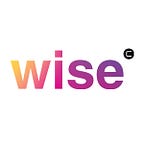Work at School / Learn at Work
At WISE, we are aware that schools are becoming working environments by adopting content based, active-learning processes and workplaces are transforming into learning organizations facilitating learning and knowledge dissemination.
Let’s take education for a start.
The idea that you work at school is nothing remarkably new. At the beginning of the XX century, the Italian educator, Maria Montessori started to refer to the activities that children were carrying on at her schools as work and not play. When teachers start a school day in a Montessori school, the ask the kids — what do you want to work on today? And not what do you want to play with. This because parents have a very negative view of play in the classroom, not connecting it with learning. While we could argue that playfulness is a crucial attitude to learning processes — it seems like working at school is a more fulfilling story.
Probably the sharpest revolution taking place today in education is called Project Based Learning (PBL). In Finland — one of the most innovative countries on pedagogy — it is now mandatory to introduce PBL in schools (specifically called phenomenon-based learning). More and more children worldwide are being taught according to a very different framework than the traditional subject based, frontal delivery of information. Instead, they learn about things by doing real-world projects and solving practical problems. A large variety of activities are carried on individually, in pairs, groups and so on. From briefing and brainstorming to imagining and researching until creating an actual product and presenting it to the world. This way of working is based on the principles of design thinking and it goes under different types of acronyms. One of our favorites comes from the Indian educational reformer Kiran Bir Sethi and it´s called FIDS (Feel — Imagine — Do — Share). You can see extracts of our interview with her here.
There are several reasons why PBL is becoming the new norm, but we believe the two most important ones are:
1) PBL involves different types of intelligences into the learning process;
Since it is based on project work, children that are good into researching will have the possibility to enhance their skills, but so will have the ones that are creative and imaginative — the makers as well as the talented speakers. An active learning model like PBL contributes to the whole spectrum of multiple intelligences.
2) Makes learning more relevant and meaningful by actually providing solutions to real problems;
We all have asked once “Why am I learning this? I will never use it in my life!”. Through PBL, children will learn about something when they will need to use it for a particular purpose or activity in a project. In this way, they will associate information and tools with a problem and therefore enhance their learning experience. Almost like a gamified learning progression, PBL increases satisfaction and engagement by capturing the interest of the students and inspiring them to continue learning as they move through the different stages of the projects.
It is no surprise that some of the most interesting project-based programs have ended up creating successful companies like the Wicked Soap Co. at High Tech High. From a classroom activity to a student-run business of handcrafted soap, the company is inspiring students and teachers all over the world.
What about work?
In many ways, education and innovation are inextricably linked. We no longer perceive learning as a limited period during which school prepares us for working life: lifelong learning is a necessity. And simple reports like the superb tool Google Books Ngram Viewer give us the ultimate proof of this intuition.
More and more modern companies are shifting towards becoming learning organizations where a considerable amount of time is invested in updating and training employees to be able to stay competitive into the everchanging business world. According to a report in the U.K., companies with innovative learning and development programs are increasing revenue and retaining staff longer.
Another interesting phenomenon shaping the future of work is Activity Based Working (ABW). ABW is an organizational strategy that provides employees with the possibility of choosing different spatial settings in relation to the activity that needs to be performed. Workers have no assigned desks and they move in the environment that best supports the type of work they are undertaking. Process, coordinate, inform and present, brainstorm, create, chat, focus and so on, are just some of the different setups that most of the employees deal with on a daily basis. For this reason, ABW is rapidly becoming the most diffused alternative to traditional workplace settings. And data seems to support its effectiveness.
According to Woodhouse Workspace, ABW reduced operational costs of a British utility company by £10M a year and increased overall productivity by 8%.
Moreover, a report from Steelcase shows that almost 90% of highly engaged employees have the option to choose different spatial settings for their specific tasks.
Another report from Acoustic Bulletin highlights how the design company Oktra eliminated 30% of their desks after switching to ABW.
We had the chance to visit this principle in action when visiting ARUP headquarters in Manchester. Thanks to director Matthew Holden for showing us around.
What does this mean for the physical environments of schools and workplaces?
It seems to us that both education and work are prioritizing certain qualities and principles of the physical environment. A mosaic of different spatial qualities that are able to support the distinct needs of the learning and working activities and at the same time be sensitive to the different preferences of the individual users.
At WISE we are investigating the design of environments that make us learn at work and work at school.
And you? Do you work at school or learn at work? Leave a comment below and stay tuned for the next article!
